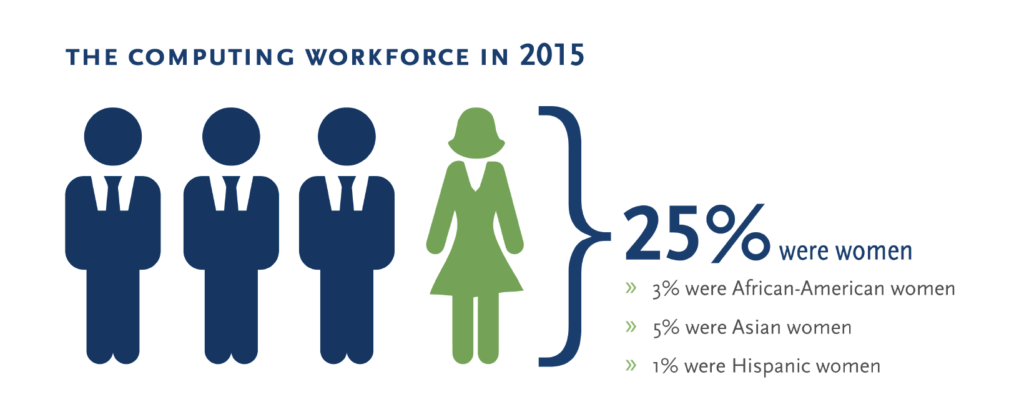
In the fast-growing world of technology, one issue continues to stand out — the gender gap. While the tech industry in the United States is known for innovation and opportunity, it has long struggled with gender imbalance. Women have been underrepresented in tech jobs, leadership positions, and startup funding for decades. But today, things are beginning to change.
From big tech companies to small startups, women are slowly but steadily making their mark. Organizations, policymakers, and trailblazing women are working together to close this gap and create a more balanced, fair, and inclusive industry.

Why the Gender Gap in Tech Exists
Historically, technology has been seen as a male-dominated field. In the early 1980s, women made up a large part of the computing workforce. However, with the rise of personal computers and the tech boom of the 1990s and early 2000s, men began to dominate the sector. Cultural stereotypes, lack of role models, and limited access to STEM (science, technology, engineering, mathematics) education pushed many young women away from tech careers.
Even today, women make up only around 28% of the tech workforce in the U.S., and fewer than 15% hold technical roles such as software engineering or data science. Leadership is also male-heavy — with only a small percentage of women in C-suite roles or as founders of tech startups.
Positive Shifts: Change Is Happening
Despite the challenges, the last decade has seen a shift in attitude and action. Tech companies are now paying more attention to diversity, equity, and inclusion (DEI). Programs focused on hiring more women, offering mentorship, and building inclusive workplace cultures are gaining ground.
Major companies like Google, Apple, Facebook (Meta), and Microsoft have launched initiatives to hire and promote women in technical roles. While these efforts are not perfect, they show growing awareness.
In education, more young women are entering STEM fields. According to recent data, the number of women earning computer science degrees has increased by 34% over the past five years. Non-profit organizations like Girls Who Code, Black Girls Code, and Women Who Tech are playing a major role in inspiring the next generation.
Leading Women in American Tech
Many women are now leading the way in the tech space, becoming role models for others.
- Ginni Rometty, former CEO of IBM, was the first woman to lead the company and focused on AI and cloud computing during her time.
- Sheryl Sandberg, former COO of Facebook, helped grow the company into a global powerhouse and is also known for her advocacy for women in leadership.
- Reshma Saujani, founder of Girls Who Code, has helped thousands of young girls learn to code and pursue careers in tech.
- Kimberly Bryant, founder of Black Girls Code, is working to give underrepresented communities access to tech education and opportunities.
These women, among many others, show that success is possible and inspire young girls to follow similar paths.

Tech Startups Led by Women
Another promising trend is the rise of women-led startups. While women still receive less than 3% of total venture capital funding, the number of women starting their own tech companies is increasing. They are building innovative solutions in areas like health tech, fintech, edtech, and AI.
Startups like Canva, co-founded by Melanie Perkins, and Eventbrite, co-founded by Julia Hartz, have proven that women can build global tech businesses. With more support from investors and networks, these numbers are expected to grow.
What’s Fueling the Change?
Several key factors are helping close the gender gap in tech:
- Mentorship and Networking: Women-focused tech communities provide spaces for mentorship, learning, and peer support. Groups like Women in Tech (WIT) and AnitaB.org are helping women connect and grow.
- Flexible Work Policies: Remote work and flexible hours allow more women, especially mothers, to join and stay in the workforce.
- Government and Corporate Policies: Policies promoting equal pay, parental leave, and anti-discrimination are making workplaces fairer.
- Increased Visibility: Media coverage of successful women in tech helps break stereotypes and shows what’s possible.
- Education and Training: Bootcamps, online courses, and university programs are targeting young women and mid-career switchers alike, making it easier to gain tech skills.
Challenges That Still Remain
While progress is happening, real challenges still exist. Women in tech often report:
- Gender bias in hiring and promotions
- Wage gaps compared to male counterparts
- Lack of female mentors and leaders
- Toxic workplace culture, including harassment and exclusion
Many women also struggle to balance family responsibilities with demanding tech jobs. And for women of color, the gap is even wider due to added barriers like racial discrimination.
How We Can Close the Gap Faster
Closing the gender gap in American tech will require collective action. Here are a few things that can help:
- Encouraging Girls Early: Schools and families must introduce girls to coding, robotics, and math from an early age.
- Inclusive Hiring Practices: Tech companies must look beyond traditional resumes and actively recruit diverse talent.
- Support Female Founders: Investors should allocate more funding for women-led startups.
- Promote Women to Leadership: Organizations must make conscious efforts to elevate women to decision-making roles.
- Create Safe Work Environments: Clear policies, training, and open dialogue can help stop discrimination and harassment.
The Future Looks Brighter
The fight for gender equality in American tech is far from over, but the momentum is real. Every day, more women are entering, growing, and leading in the industry. And as more women rise, they lift others with them.
If this trend continues, the future of tech in America will be more diverse, more innovative, and more inclusive — not just for women, but for everyone.
Read More :- How 9 Best Technology Is Transforming American Healthcare






